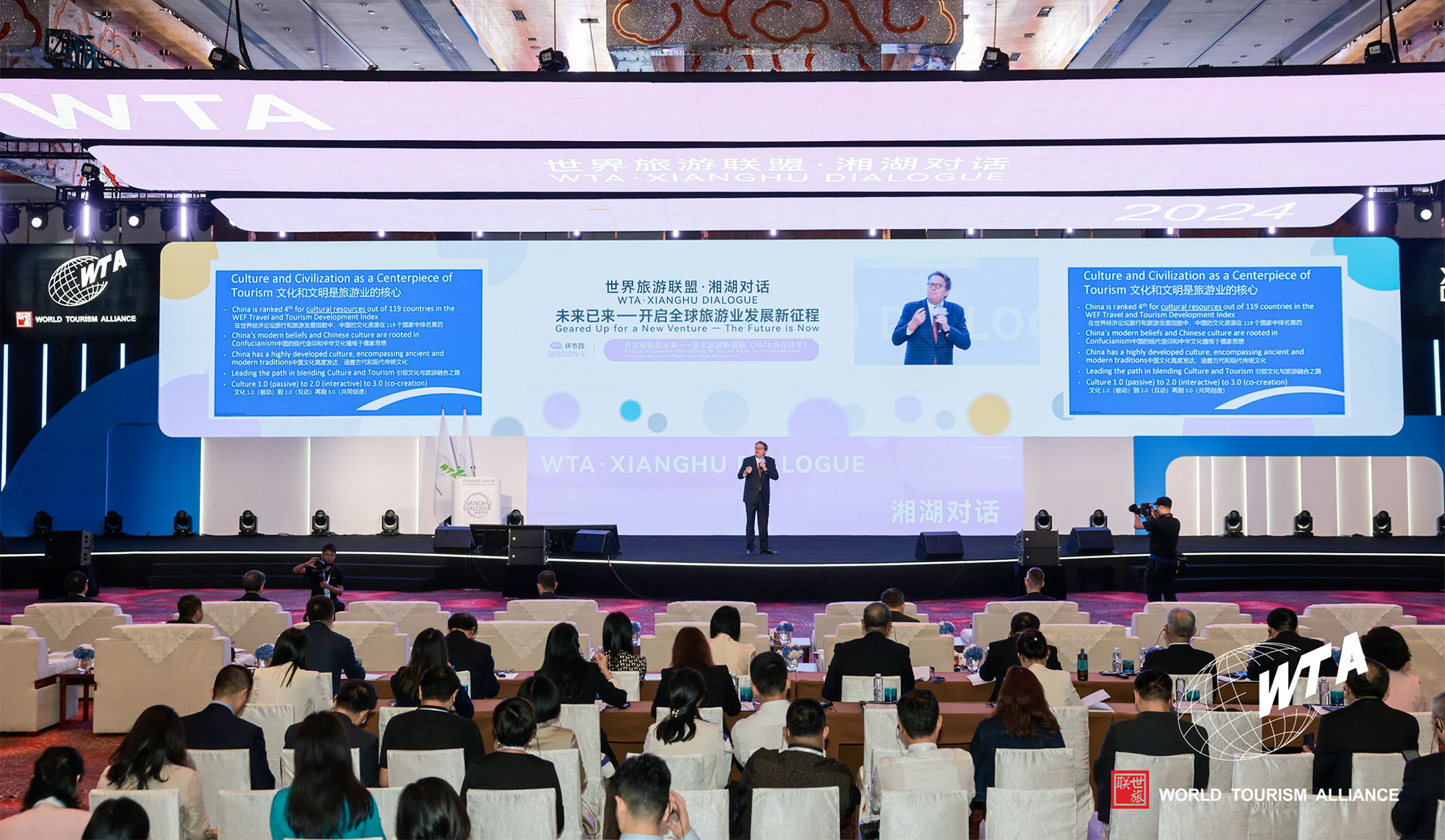2024-11-14
October 31, at the WTA · Xianghu Dialogue 2024 in Sanya, Hainan, Mr. Peter SEMONE, Chair of the Pacific Asia Travel Association, delivered a keynote speech on "A Good Place to Live is a Good Place to Visit". Below is a summary of the key points discussed.

Today, I would like to begin by exploring the true meaning of "openness". Openness is a concept with broad and profound implications, encompassing how a community or region engages with the outside world in an inclusive and welcoming manner. This is reflected in how its residents receive visitors and how they, in turn, explore the world. Openness involves policies on visas, cross-border travel, and much more. China serves as a remarkable example of openness. By comparing China in 1978 with China today, we can truly understand the transformative power of openness. I recall my first visit to China in 1978, traveling with my parents from Hong Kong by boat. Back then, China had just begun its reform and opening-up journey, welcoming the world with great enthusiasm and curiosity about tourism. Today, China demonstrates unparalleled advantages in cultural and tourism development.
As an American who has lived in Asia for over 30 years, I have personally witnessed the hospitality and safety within China. Each year, when I visit my family in the United States, I reassure friends who are concerned about safety in China that their fears are unfounded. I have also come to deeply appreciate that tourism is a crucial channel for cultural exchange, building understanding between nations and fostering closer connections among people. As tourism professionals, wherever we may be, we have the opportunity to act as bridges of civilization and ambassadors of friendship. Moving forward, we should adopt more measures to enhance the role of tourism in promoting people-to-people exchanges and cross-cultural understanding.
However, in the global recovery of the tourism industry, I’ve observed a troubling reality: too much attention is focused on commercial interests, with insufficient regard for the inclusivity of people and community development. Now is the time for reflection. We should consider how to advance openness and inclusivity while encouraging greater community participation. In this regard, China stands out with its sustainable and inclusive approach to tourism, which offers valuable lessons to the world.
China is home to 59 UNESCO World Heritage Sites, making it a key player in preserving and showcasing the world’s historical and cultural legacy. This is a significant advantage for China’s tourism sector. According to the Travel & Tourism Development Index (TTDI) 2024 released by the World Economic Forum, China ranks fourth globally in cultural tourism resources among 119 countries and regions. Cultural heritage is undoubtedly a priceless asset for China.
In terms of development, China’s cultural tourism is now at a stage where tourists and local communities collaboratively create experiences. Cultural experiences are increasingly shifting from one-way consumption to interactive engagement, allowing visitors to immerse themselves in local traditions. While China boasts numerous successful examples in this area, I have observed that some museums still maintain a physical and conceptual distance between exhibits and visitors. This gap needs to be bridged to meet the growing demand for interactive experiences. Incorporating elements of modern culture, such as fashion and music, can effectively enhance visitor engagement. I recommend incorporating contemporary cultural elements into heritage preservation efforts to create a harmonious coexistence between tradition and modernity.
China’s achievements in green transformation are exemplary, forming a strong foundation for sustainable tourism. Advancing the goals of the UN’s 2030 Agenda for Sustainable Development is key to global sustainability efforts. However, progress on the Sustainable Development Goals (SDGs) has been slow, with only 16% of the goals achieved globally by 2023. Amid these challenges, China has made remarkable strides. According to the 2024 UN SDGs Index, China ranks 68th globally with a score of 70.85, reflecting substantial progress in sustainable development. China’s leadership in renewable energy—dominating global markets for solar and wind energy—underscores its commitment to a greener future. As green transformation deepens, the sustainable growth of China’s tourism industry will become even more promising.
China has successfully achieved a “leapfrog” in the digital transformation, which serves as a key driver of sustainable tourism development. Technology has accelerated the growth of smart tourism, integrating across every layer of the tourism value chain. Through digital transformation, we can enhance service quality and operational efficiency while ensuring inclusivity and sustainability.
China’s tourism economy has grown rapidly under the support of reform and opening-up policies and sustainable development principles. However, many around the world still lack a full understanding of China’s progress. I warmly encourage more visitors to explore China. Here, I would like to offer six recommendations for further strengthening China’s tourism development: 1. Foster cross-cultural exchange. 2. Accelerate the development of modern tourism. 3. Showcase the vibrancy of modern Chinese culture. 4. Increase investment in local communities. 5. Foster deeper interpersonal connections. 6. Uphold the principles of sustainable development.

I firmly believe that if a place is a good place to live, it will naturally be a great place to visit. Today, China is warmly welcoming friends from the United States, Europe, and across the globe. I look forward to visitors having deeper interactions with the Chinese people, gaining greater understanding through travel and strengthening friendships through exchanges.